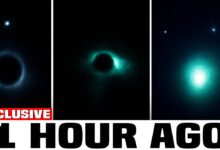James Webb Telescope FINALLY Found Urban Lights 4 Light Years from Earth

The James Webb Space Telescope has made a startling discovery: lights that look like they’re coming from a city, emanating from a location four light years away from Earth.
The discovery has revived hopes for the existence of extraterrestrial life. While focusing on Proxima Centauri b, the closest exoplanet to ours, the telescope recorded mysterious flashes of light that could be signs of an alien civilization.
The event has intrigued scientists and the public alike, as it suggests that intelligent beings might be socially organized in ways we’re only just beginning to discover. The planet has complex characteristics that are unlike other rocky planets.

Instead of absorbing sunlight and emitting energy in the form of infrared rays, the planet exhibits unique behavior due to its relationship with its parent star, Proxima Centauri.
The James Webb Space Telescope, which can observe in the infrared, has detected these faint light signals, shedding light on the planet’s atmospheric conditions.
If Proxima Centauri b has an atmosphere, the next step is to analyze its chemical composition to determine its ability to support life, looking specifically for signs of oxygen, water vapor, and methane.

Scientists are also developing technologies such as starshades and coronagraphs to reduce the glare from stars, allowing for clearer observations of planets.
These advanced technologies, while requiring extreme precision, have the potential to uncover more signs of life on distant planets, making major strides in answering the question: are we alone in the universe?








